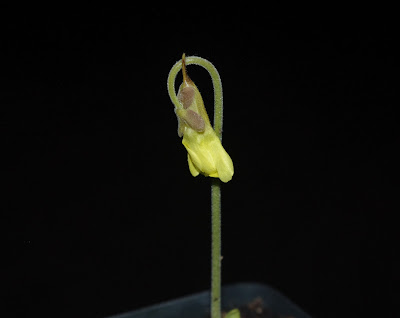Iris hexagona has the widest range of the Irises in Florida. It is found throughout much of the state except for the southeast and northwest portions of the state. I have seen it growing in various places around Manatee County, FL. Here are some that are growing around the neighborhood:
Iris hexagona, late in the afternoon in a wooded area adjacent to a stream and sometimes floods. These plants are shaded by Live Oaks (Quercus sp.) but get some filtered light. The plants look very inconspicuous when not in bloom.
Iris hexagona about to bloom - perhaps tomorrow.
Iris hexagona growing in a sunny streamside area. The soil is very sandy, which you can see in the stream.
A close up of the same flowers.
Iris hexagona has three varieties. These are Iris hexagona var. savannarum which hold their flowers above their leaves. They should also have a smooth circular seed pod when viewed from above (instead of a hexagon) but I have not observed this yet since this is the first time I've seen them flower!
If you live in Florida this would be a great addition to a water garden or pond. My Mom moved a plant up to the garden from our pond and its been growing and blooming without wet conditions - which really surprised me. Just to be safe though, keep it on the moist - wet side.






























